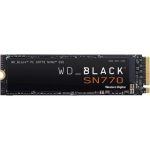July 12 () –
This July, NASA will send a team of four 60 cm cubeSats. around the Earth to see if they can cooperate on their own, no real-time updates from mission control.
While that kind of autonomous cooperation may not sound too difficult for humans, this team will be robotic, made up of small satellites to test key technologies for future deep-space missions, where more complex and autonomous spacecraft will be essential.
Once launched, the four CubeSats will fly in two different formations to test various technologies that will pave the way to a future where swarms of satellites can cooperate to do science in deep space. This mission, called Starling, will last at least six months, positioning the spacecraft about 571 kilometers above Earth and spaced about 64 kilometers apart, NASA explains. it’s a statement.
There are four main capabilities Starling will test: maneuvering autonomously to stay together as a group, creating an adaptive communications network between the spacecraft, tracking each other’s relative position, and responding to new information from onboard sensors. by running new activities on your own. In essence, Starling seeks to create a swarm of small satellites that can function as an autonomous community, able to respond to their environment and complete tasks as a team.
Swarm technologies enable the ability to take scientific measurements from multiple points in space, build networks capable of repairing themselves if a part fails, and have spacecraft systems that do not need to remain in contact with Earth to respond to changes in the environment. atmosphere. A swarm of spacecraft is also more resilient against failure or malfunction within the team, since each spacecraft is redundant to another. If one fails, the others can compensate.
Starling’s first mission brings a set of four technologies to test. The first is ROMEO (Onboard Reconfiguration and Orbit Maintenance Experiments), a test software designed to plan and execute maneuvers autonomously without direct operator intervention. In the Starling mission, it will allow the satellites to fly in groups, both planning trajectories and executing them on your own.
A mobile ad-hoc network (MANET) is a communications system made up of wirelessly connected devices in which data is automatically routed and rerouted based on network conditions. An example on Earth is mesh Wi-Fi, in which multiple Internet routers are placed in a home, allowing mobile devices to automatically connect to the strongest signal. In the same way, the Starling spacecraft has cross-link radios that allow communication between spacecraft when they are in range, and the onboard MANET software determines the best way to route traffic through the satellite network. Starling will test this network and show whether the system can automatically create and maintain a network in space over time.
Each CubeSat also has its own “star tracking” sensors on board, which are typically used so a satellite can track its own orientation in space, much like sailors use the stars to navigate at night. Because the satellites will be relatively close to each other, as well as the stars, these sensors will pick up light from spacecraft in the swarm and use specialized software to keep track of the rest of the swarm. Called StarFOX (Starling Formation-Flying Optical Experiment), this unique use of common spacecraft sensors it will allow the backdrop of stars to hold the swarm together.
Finally, the Distributed Spacecraft Autonomy (DSA) experiment demonstrates the ability of a swarm of spacecraft to collect and analyze scientific data on board and cooperatively optimize data collection in response. The satellites will monitor Earth’s ionosphere, part of the upper atmosphere, and if one detects something interesting, it will communicate with the other satellites to observe the same phenomenon. The ability of satellites to autonomously react to an observation it will enhance scientific data collection for a number of future NASA science missions.
With its primary mission complete, Starling’s next phase will be a partnership with SpaceX’s Starlink constellation of satellites to test advanced space traffic management techniques between autonomous spacecraft operated by different organizations. By sharing future trajectory intentions with each other, NASA and SpaceX will demonstrate an automated system to ensure both sets of satellites can operate safely. while in relative proximity in low Earth orbit.













